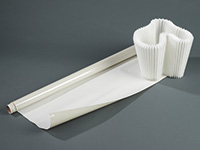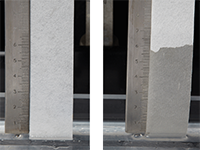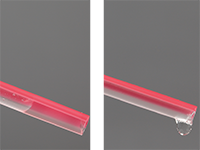Improved surface
wettability
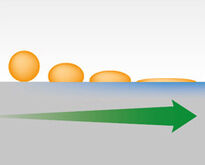
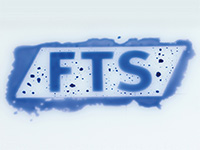
Industries
- Aerospace
- Automotive
- Building services
- Construction materials
- Decorative surfaces and trim parts
- Electrical engineering
- Filtration
- Household goods
- Lighting
- Medical technology
- Packaging
- Print products
- Technical textiles
- Tunnelling
Wettability fluorination
Wetting plastic surfaces is much easier after they have been fluorinated.
- Enhanced liquid films
- Uniform layers
- Improved drying
- Smooth draining of liquids
Process background
The wetting properties of plastic materials depend on the polarity pairing: different polarities cause the liquid to form drops on the surface. Fluorination creates higher surface energies in polar plastics that are thus adjusted to the surface energy of the liquid. Such surfaces are very suitable for wetting with polar liquids.
Use
The larger and smoother surface of the liquid covering a component has the following benefits:
- Faultless liquid films
- More uniform coating
- Enhanced printability
- Faster drying
- Better draining of liquids
- Prevention of mould formation
- Improved lubrication effect of liquid
Plastic materials suitable for wettability fluorination
ABS – acrylonitrile-butadiene-styrene, EPDM – ethylene-propylene-diene rubber, organic plastics – plastics made of renewable raw materials, NBR – nitrile rubber, HNBR – hydrogenated acrylonitrile-butadiene rubber, PA – poly-amide, PC – polycarbonate, PEEK – polyether-etherketone, PET – polyethylene-terephthalate, PMMA – polyme-thyl-methacrylate, polyester, GFK / CFK – glass-fibre-reinforced polymers, mixed polymers, PPE – polyphenylene-ether, PP – polypropylene, TPE – thermoplastic elastomer


